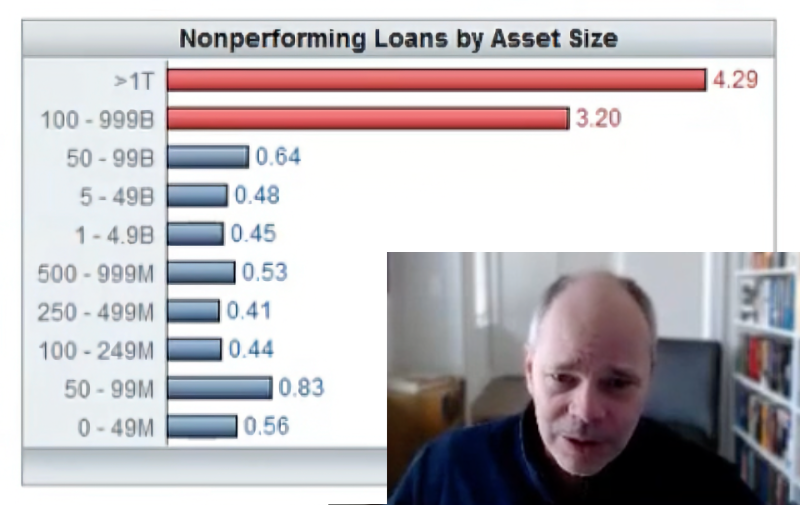For this week, we look at how CRE risks are not even distributed by institution size. Also, how advertising giant David Olgivy built trust with his clients.
1. Where the CRE risk really lies in banking
BankRegData’s Bill Moreland breaks down how the commercial real estate concentration in small to mid-size Fis doesn’t tell the whole or even correct story of where the fallout may occur.
“Everyone is focused on the CRE concentration ratio. It’s predictive. The big banks don’t have a lot of it. We need to be worried about the community banks, the larger and smaller communtiy banks.
But the reality of the situation is, they’re not having NPL issues.
Without a doubt, there is 429 basis points (of CRE non-owner occupied NPL) of the the four largest banks. This is not potential. This risk is currently here.”
2. How unhappiness leads to success
A book, you can’t buy, offers the answer to this seemingly contradictory statement. The Eternal Pursuit of Unhappiness is a personal and business philosophy from the advertising firm Ogilvy and Mather. This book was written by and for the team and captures the tenets of a creative organization as laid out by their founder and advertising titan, David Olgivy. The intent was to adopt a “divine discontent” to avoid smugness, complacency, and mediocrity.
One example is how courage leads to trust.
1. Courage
If fear is our principal adversary, then, courage is our chief ally. It is the first of the eight creative habits for good reason: it is the habit that guarantees all the others.In the absence of courage, nothing worthwhile can be accomplished.
And only by standing up for what we believe will we begin to build the most precious commodity in the world. Trust.
This short video summarises the 8 principles of the book.
For more see David Senra’s excellent breakdown in this episode of the Founder’s podcast.
And that’s it for this Friday. I for one, think most people are too confident in their goose fighting abilities. You honor, I submit Exhibit 1. Click below to let us know how we did:

